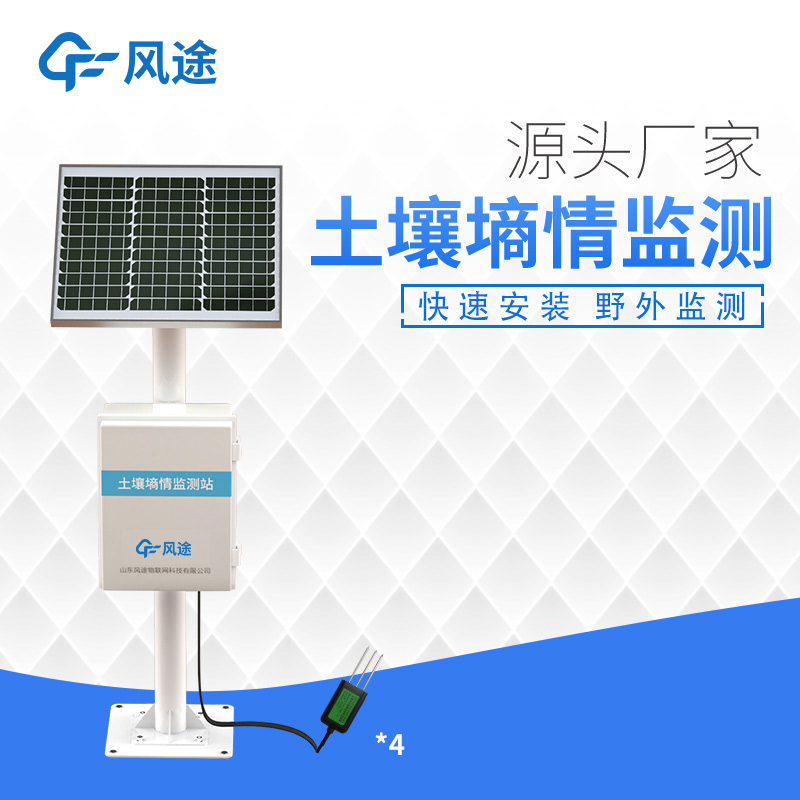Shandong Fengtu IOT Technology Co., Ltd
Sales Manager:Ms. Emily Wang
Cel,Whatsapp,Wechat:+86 15898932201
Email:info@fengtutec.com
Add:No. 155 Optoelectronic Industry Accelerator, Gaoxin District, Weifang, Shandong, China

Sales Manager:Ms. Emily Wang
Cel,Whatsapp,Wechat:+86 15898932201
Email:info@fengtutec.com
Add:No. 155 Optoelectronic Industry Accelerator, Gaoxin District, Weifang, Shandong, China
time:2024-04-23 08:38:15 source:Weather Station viewed:996 time
In the absence of instrumentation, the moisture condition of the soil can be quickly assessed by hand feel and is usually categorised into the following four classes:
Wet: if water flows out visibly when the soil is squeezed, this indicates high soil moisture.
Wet: Soil that leaves wet marks in the hand and can be easily rolled into clumps or strips, but no water flows out, indicates that the soil is in a moist state.
Slightly moist: Soil that is cool and moist to the touch and leaves a slight indentation when lightly pressed indicates moderately moist soil.
Dry: The soil does not feel cool to the touch and the clay begins to clump and harden, which indicates that the soil is dry.
The general situation of soil drought can be seen without the use of instruments, and specific soil moisture data can be obtained by using instruments, which is easy to analyse.
The Automatic Soil Moisture Monitoring System is primarily used to monitor the moisture content and temperature of the soil. The system consists of the following core components:
Data Acquisition Module: collects soil volumetric water content (VWC) and temperature data through sensors installed in the soil.
Data transmission module: transmits the collected data to the central database via wireless or wired means.
Database: Stores monitoring data to ensure data uniformity and traceability.
The system can be expanded according to user requirements by adding sensors for air temperature and humidity, soil conductivity, solar radiation, carbon dioxide and other meteorological parameters to provide more comprehensive monitoring data. The monitoring station automatically sends the data to the network data platform and stores it in a standardised format. Users can view the data in an intuitive way such as graphs and charts for easy understanding and analysis.
The system architecture includes:
Sensing layer: the sensor layer in direct contact with the soil, responsible for collecting soil and meteorological data.
Transmission layer: responsible for transmitting the data collected by the sensing layer to the data processing centre.
Data layer: a database system that processes and stores the data coming from the transmission layer.
Service layer: provides data processing, analysis and visualisation services.
Application layer: final user interface, providing data access, monitoring and management functions.
Standard Specification and Operation Guarantee System: Ensures standardised operation and maintenance of the system.
This system provides accurate soil moisture and temperature information for agriculture through automated and intelligent means, supporting scientific irrigation and farming decisions.

Automatic water quality monitoring is of great significance for freshwater resource management. Its monitoring parameters include physical parameters (such as temperature, pH value, turbidity) and chemical parameters (such as dissolved oxygen, residual chlorine). Temperature reflects the hydrotherma...
Photovoltaic power generation is a crucial component of renewable energy, with solar cells serving as its core equipment. To evaluate the performance and efficiency of solar cells, the Portable IV Curve Tester is an essential tool. This article will introduce the principles, functions of the Portabl...
best professional weather station provides indoor and outdoor temperature and humidity, wind speed and direction, air pressure and rainfall....
The Portable Visibility Detector is a portable device for measuring visibility in the atmosphere. Its main applications are in transport, energy, chemical and aviation fields and it has a wide range of practical value. The following section describes the solution for the portable visibility detector...